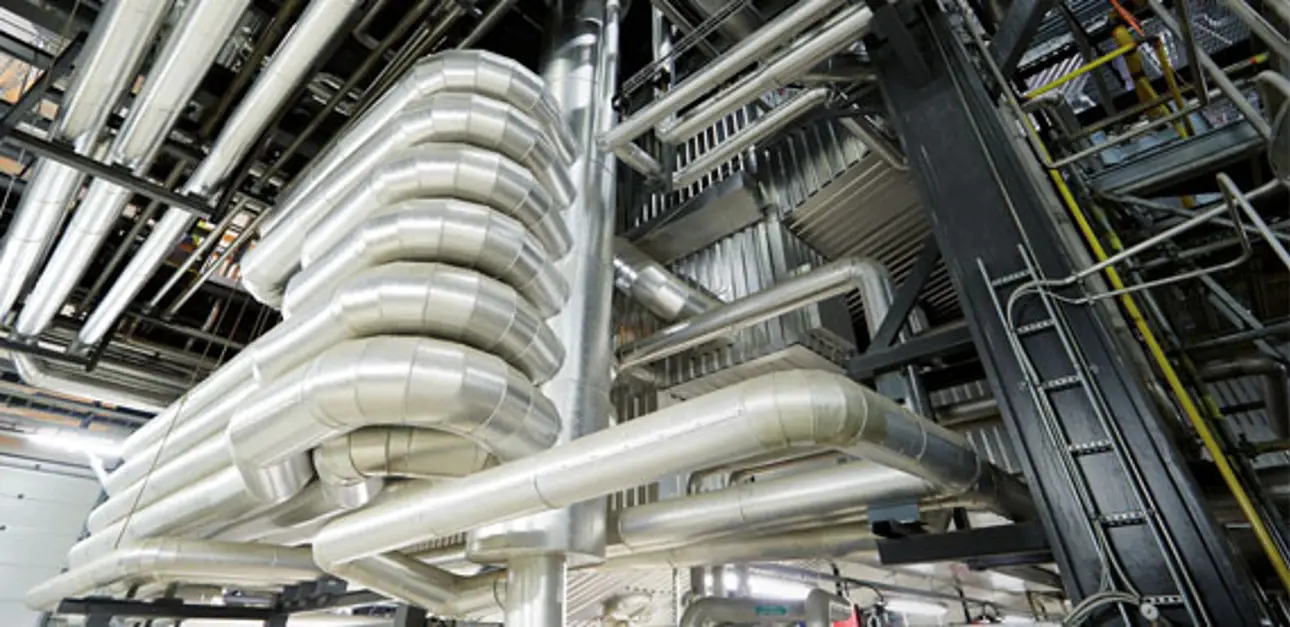Focus on fuel flexibility
The new multifuel boiler plant at Turun Seudun Energiantuotanto (TSE) is an excellent example of the best features of CFB technology, such as the possibility to use whatever fuel is currently available at the lowest cost.

December 1, 2017 marked the start of commercial operation at TSE’s new NA4 power plant in Naantali on the southwestern coast of Finland. Its production capacity is 146 MWe of electricity and 250 MWth of heat. The planned annual production amounts to 800 GWh of electricity (net) and 1,550 GWh of heat.
“The main driver for the investment was the 50-year-old pulverized coal fired plant with its three blocks was reaching the end of its life cycle. We had to figure out how to ensure district heat deliveries in the future in an economical, efficient and sustainable way,” says Tapani Bastman, Managing Director of TSE.
Combating climate change
TSE produces district heat and electricity for Turku and Naantali and the surrounding area, as well as process steam for the needs of nearby companies. It is owned by Turku Energy, Fortum Power and Heat, and Turku’s neighboring municipalities of Raisio, Kaarina and Naantali. The company’s 15-kilometer district heating tunnel is one of the longest in Europe.
Another driver was the desire to combat climate change and replace coal as a fuel with renewable energy sources – mainly local biofuels – in the long run. Additionally, the Finnish Government has decided that the use of coal in energy production will be prohibited by law in 2029.
“For all these reasons, we wanted a multifuel power plant that would feature high fuel flexibility and enable us to burn all kinds of biofuels together with peat or other fuels when it is no longer possible to use coal,” Bastman continues. “In Finland, there are changes in energy taxation every time there is a change in government. Market prices swing back and forth based on political decisions, so we cannot rely on one fuel – we need a solution that enables us to change the fuel mix flexibly.”
Mixing fuels flexibly
TSE opted for circulating fluidized bed (CFB) technology to fulfill its fuel flexibility requirement. The company chose Valmet to supply the boiler island, as they considered its tender to have the best ratio of quality to price.
Valmet delivered a CFB Boiler (CYMIC at the time) with 100-percent coal firing capacity and a design fuel mixture that also includes wood-based biomass (0–75 percent), agro-based biomass (0–15 percent), peat (0–95 percent) and solid recycled fuel (0–5 percent).
”Our target is to run the plant 70 percent on biomass. In order to run purely on biomass, we would have to make an additional investment. In the meanwhile, we have other interesting fuel alternatives to consider, too,” Bastman adds, but he prefers not to disclose what they are.
Valmet’s delivery also included flue gas cleaning systems and a wide range automation solutions, for example for monitoring emissions and managing energy consumption. The letter covers TSE’s production units outside Naantali, too. “We are convinced that Valmet’s total solution featuring both automation and boiler technology from the same supplier works best for us,” Bastman says.
High efficiency with demanding fuels
The new Valmet CFB Boiler was designed to feature both high efficiency and high reliability, regardless of the demanding fuel mix. High reliability is ensured through low-maintenance boiler components and redundant design in the auxiliary equipment.
The power plant consists of a reheat steam system, a two-stage district heat system, and by-pass lines to produce only heat when necessary. The steam parameters were selected to be quite high compared with the fuel quality: main steam at 555 °C/160 bar, reheat steam at 555 °C/40 bar. The thermal capacity is 390 MWth.
Some of the design fuels, such as agro-biomass and SRF, contain quite high amounts of chlorine (0.2–0.4 percent), representing a risk of high-temperature corrosion in the finishing superheater and finishing reheater, especially as the steam temperature in both superheated and reheated steam is quite high, at 555 °C.
In order to mitigate the risk of high-temperature corrosion, both the finishing superheater and reheater surfaces are located inside the bed material in cyclone loop seals. The bed material protects the heat surfaces against corrosive gas components.
Project completed on time and budget
The extensive project was completed on time and on budget. “As a whole, the project went well, and cooperation with Valmet was open and constructive. I would especially like to point out that the LTIF (lost time incident rate) for the whole project was 2.13 incidents per million working hours, which is a world-record result,” Bastman says.
100 percent boiler availability
Due to turbine issues, the boiler has been running at a lighter load (60-70 percent) than planned. “However, the availability of the boiler has been 100 percent. The boiler runs very well either with 100 percent coal or 70 percent biofuels, and there have been no combustion issues,” Bastman remarks.
During the first months of its commercial operation, the NA4 power plant has been run with a varied fuel mixture, consisting of 70 percent biofuels, 4 percent peat and 26 percent coal. The biofuel has been a mixture of different forest wood chips, bark and sawdust.
The multifuel capability and flexibility with different fuels and fuel qualities has been achieved well. The NA4 plant is able to operate with a wide fuel range, and at the same time achieve guaranteed steam parameters.
The old coal-fired power plant blocks NA1 and NA2 are no longer used. TSE’s next challenge is to figure out what to do with the coal-fired NA3 unit. According to Bastman, there has been talk about adding a flue gas condenser to the NA4 unit to increase its district heat production and replace NA3’s capacity.
Related articles



